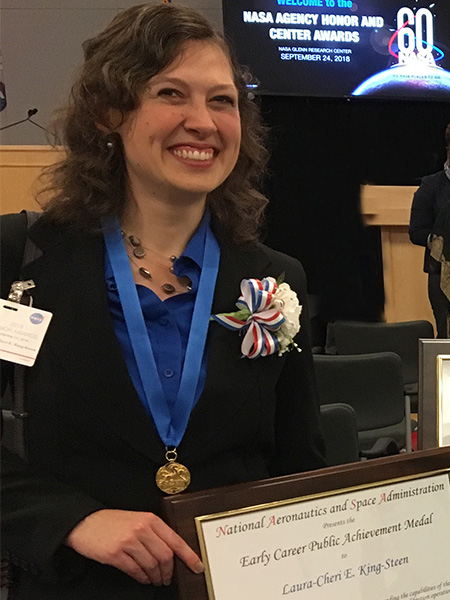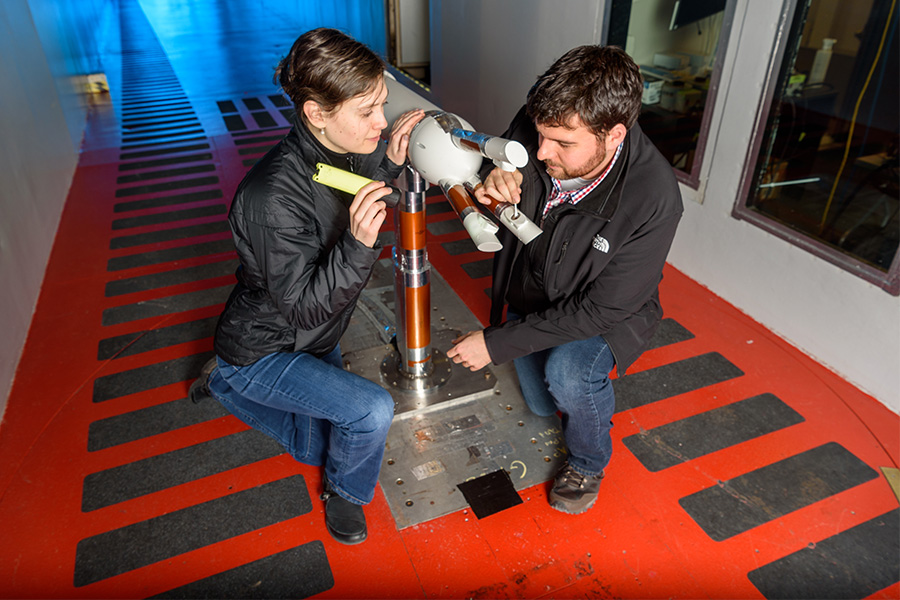AAE alumna receives NASA's Early Career Public Achievement Medal

AAE alumna Laura King-Steen received the Early Career Public Achievement Medal from NASA, one of the agency’s highest awards, that represents an “acknowledgement of significant contributions to NASA’s mission and purpose.”
King-Steen (MSAAE ’10) was honored for outstanding technical achievement in greatly expanding the capabilities of the NASA Glenn Icing Research Tunnel and improving icing cloud calibration operations, according to NASA.
She received the medal Sept. 24 at the 2018 Agency Honor and Center Awards Ceremony.
"It is quite an honor, and I wouldn’t have been able to achieve it without the support of my husband Michael King, my mentor Bob Ide, or the great engineering and technician team we have here at the Icing Research Tunnel," King-Steen says. "It certainly also makes me again appreciate the great influences I’ve had from my parents, teachers, and professors across the years."
King-Steen says her work as a graduate student with AAE Professor Steven Schneider and at the Boeing/AFOSR Mach-6 Quiet Tunnel ultimately helped her land her current job as an on-site contractor at the IRT at Glenn, where she is in charge of calibrating the icing cloud.
“Fewer than probably 10 people in the world have my exact same job title,” she says. “My work at Purdue in flow characterization for the wind tunnel really gave me the foundation I needed for success in my current role. I learned how to work in an experimental wind tunnel environment and adjust for changing conditions.”
King-Steen puts her Purdue knowledge to good use in the icing tunnel, which is used to simulate the effects of higher altitude icing conditions on aircraft. When aircraft fly through clouds, the liquid from those clouds forms drops that hit the wing, freeze and create icy structures that can threaten flight operations.
“I calibrate the icing cloud we create in the tunnel to ensure aircraft meet regulations and can safely perform in such conditions,” King-Steen says. “I also look for possible improvements to our calibrations and overall better methods for performance in the tunnel.”
One of the most important lessons King-Steen says she learned during her time at Purdue was the ability to critically analyze test results.
She says she remembers having a research project where it seemed like the only conclusion was “that there was no conclusion.”
“Thanks to the help of Prof. Schneider and others, I came to understand that this situation is perfectly valid. Sometimes the best conclusion is actually stating what you did, what you accounted for, and what you believe could be changed in future experiments to produce different results,” she says.

